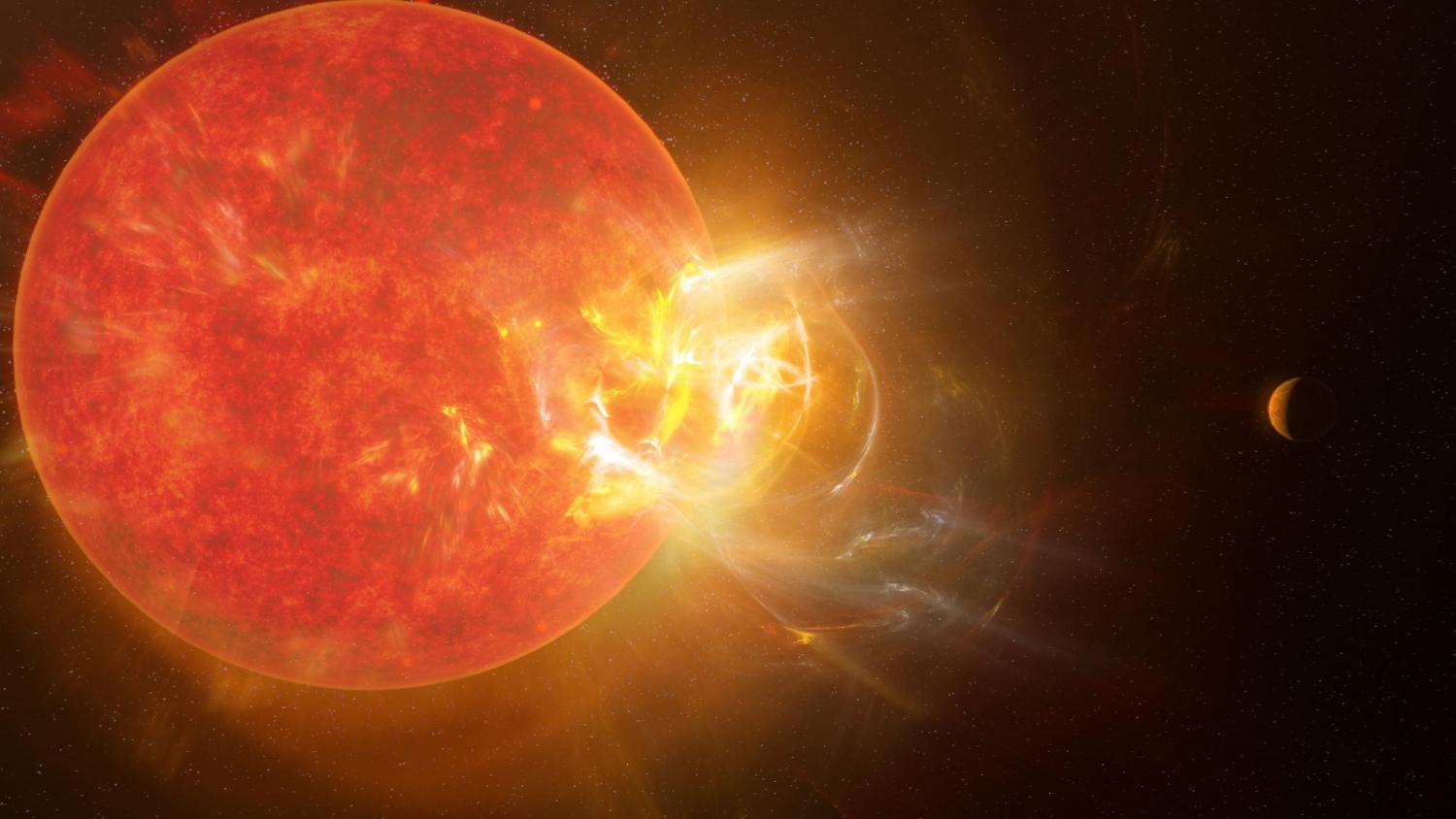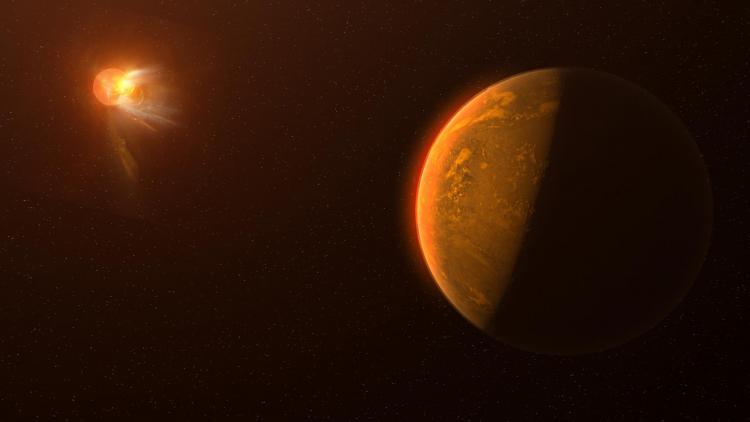Proxima Centauri shoots out humongous flare, with big implications for alien life
The flare was around 100 times more powerful than those emitted by the sun.

Scientists have spotted one of the largest stellar flares ever recorded in our galaxy. The jets of plasma shot outward from the sun's nearest neighbor, the red dwarf star Proxima Centauri. The flare, which was around 100 times more powerful than any experienced in our solar system, could change the way scientists think about solar radiation and alien life.
Proxima Centauri is a red dwarf — the smallest, dimmest and most common type of main sequence stars in the galaxy — located approximately 4.25 light-years from Earth. Its mass is only one-eighth of the sun's, and it is orbited by two exoplanets. One of these planets, Proxima Centauri b, is considered to be Earth-like and lies within the star's habitable zone — the distance from a star that could support the development of life, according to the researchers.
In a new study, researchers used nine ground and orbital telescopes — including the Hubble Space Telescope, the Atacama Large Millimeter/submillimeter Array and NASA's Transiting Exoplanet Survey Satellite — to closely monitor Proxima Centauri for a total of 40 hours over several months in 2019. On May 1, 2019, the team captured the mega flare, which shone for just 7 seconds and was mainly visible in the ultraviolet spectrum.
Related: 10 solar eclipses that changed science
"The star went from normal to 14,000 times brighter when seen in ultraviolet wavelengths over the span of a few seconds," lead author Meredith MacGregor, an astrophysicist at the University of Colorado Boulder, said in a statement.
The power of this flare and type of radiation it emitted could change what we know about red dwarfs and the chances of life developing on the planets that orbit them.
A humongous flare
Stellar flares are the result of a star's strong magnetic fields. These fields — which are created by large amounts of electrically charged gas — can get twisted together and suddenly snap back into place to release an enormous amount of energy in the form of radiation, kind of like firing an elastic band at someone with your fingers.
Get the world’s most fascinating discoveries delivered straight to your inbox.
The flare on Proxima Centauri was extremely powerful compared with those emitted by the sun. Unlike flares from the sun, this one also emitted different kinds of radiation. In particular, it produced a huge surge of ultraviolet light and radio waves — known as "millimeter radiation."
"In the past, we didn't know that stars could flare in the millimeter range, so this is the first time we have gone looking for millimeter flares," MacGregor said in the statement.
This finding was possible only because the team monitored the star using such a wide variety of telescopes, each focused on a different part of the electromagnetic spectrum.
"It's the first time we've ever had this kind of multiwavelength coverage of a stellar flare," MacGregor said in the statement. "Usually, you're lucky if you can get two instruments."
The new findings suggest that stellar flares given off by red dwarfs are much more violent than previously expected and could reduce the likelihood of alien life developing around them.
Bad news for aliens
The type and amount of radiation given off by Proxima Centauri could make it very hard for life to survive on its orbiting exoplanets, which likely have no real atmosphere due to the powerful flares, according to the researchers. But it's not impossible for alien life to exist there.
"If there was life on the planet nearest to Proxima Centauri, it would have to look very different than anything on Earth," MacGregor said in the statement. "A human being on this planet would have a bad time."
Other red dwarfs likely give off equally powerful flares, thus decreasing the chances that red dwarf-hosted planets could support life. They also flare "much more frequently" than the sun, further reducing the chances of finding life in that star system, according to the researchers.
"Proxima Centauri's planets are getting hit by something like this not once in a century, but at least once a day, if not several times a day," MacGregor said in the statement.
The researchers now hope to use the wide variety of telescopes to focus on other stellar flares across our galaxy.
"There will probably be even more weird types of flares that demonstrate different types of physics that we haven't thought about before," MacGregor said in the statement.
The study was published online April 21 in The Astrophysical Journal Letters.
Originally published on Live Science.

Harry is a U.K.-based senior staff writer at Live Science. He studied marine biology at the University of Exeter before training to become a journalist. He covers a wide range of topics including space exploration, planetary science, space weather, climate change, animal behavior and paleontology. His recent work on the solar maximum won "best space submission" at the 2024 Aerospace Media Awards and was shortlisted in the "top scoop" category at the NCTJ Awards for Excellence in 2023. He also writes Live Science's weekly Earth from space series.



